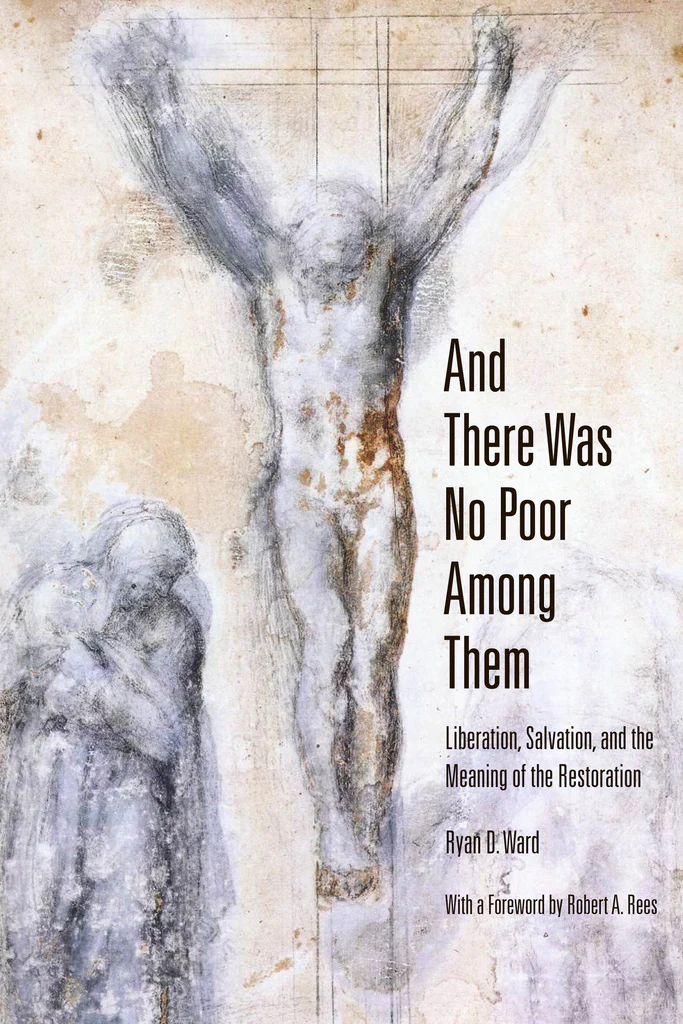Review
Title: And There Was No Poor Among Them: Liberation, Salvation, and the Meaning of the RestorationAuthor: Ryan D. WardPublisher: Greg Kofford BooksGenre: Religious Non-FictionYear Published: 2023Number of Pages: 265Binding: PaperbackISBN: 978-1-58958-787-8Price: $26.95
Reviewed by Conor Hilton for the Association for Mormon Letters
And There Was No Poor Among Them: Liberation, Salvation, and the Meaning of the Restoration by Ryan D. Ward offers a thorough introduction to liberation theology for Latter-day Saints. The first half of the book largely synthesizes the ideas of a wide range of liberation theologians on the Old Testament, New Testament and briefly on Christian history, while the second half turns to Restoration scripture and the Zion building of early Mormon history.
Ward is well-versed in liberation theology, and the book has rich, informative footnotes, along with a fairly extensive bibliography, both of which will be welcome resources for anyone wanting to dig more deeply into liberation theology. Those already familiar with many of these texts and ideas may want to skip or skim through the opening three chapters to arrive at the more unique contributions to interpreting the Restoration and liberation theology that Ward has to offer. Those relatively new to liberation theology will likely welcome the way that these opening chapters offer a primer on the topic.
And There Was No Poor Among Them offers a fiery, bold critique of capitalism and the way contemporary Christianity, including the Church, is complicit in the harm and immorality of capitalism. The bold manifesto-like prose in the conclusion is notably absent from most of the book, which instead uses a more detached, descriptive, somewhat academic tone. I at times found myself longing for Ward to adopt more of the style of the conclusion throughout the earlier chapters, though I can see that it may have been a strategic choice to reach a broader audience, by using less fiery language until the very end of the book.
Ward’s interventions in the second half of the book are insightful and a needed contribution to the world of Mormon theology. One of the insights that will stick with most is in Ward’s close reading of the first section of the Doctrine & Covenants, particularly verse 17. Ward highlights how the Lord brought about the Restoration to respond to “the calamity which should come upon the inhabitants of the earth” (109-10). Here Ward focuses on the tense, that this calamity is still coming when the Restoration occurs, which means it cannot be the Great Apostasy (the sense of this passage which I at least had internalized or absorbed). Ward then offers a historical overview of the advent of capitalism, arguing that it is “the calamity” the Restoration is designed to address.
Throughout this section and the subsequent chapters, Ward offers some engaging and insightful readings of a variety of passages from Restoration scripture, often paired with moments from the Bible. Like many liberation theology readings, I find them interesting, morally compelling, and not completely persuasive as to being the only or the best reading of scripture. However, my literary analysis training renders me almost incapable of being totally persuaded that any one reading is the only or best reading of the text, so it’s a small complaint. And Ward offers robust evidence and support for the readings of the passages he selects, weaving together King Benjamin’s masterful discourse with the followers of Alma by the Waters of Mormon, alongside liberation theology readings of the Gospels.
I hope that many of my fellow co-religionists read And There Was No Poor Among Them: Liberation, Salvation, and the Meaning of the Restoration and begin to wrestle with the ideas that Ward brings to the table. The book brings new light to Restoration scripture that we as a people should ponder deeply and work to extend, challenge, and improve. And perhaps most importantly, I hope that Ward’s book inspires me and my fellow Saints to work more fully to restore a community where “there was no poor among them”.

